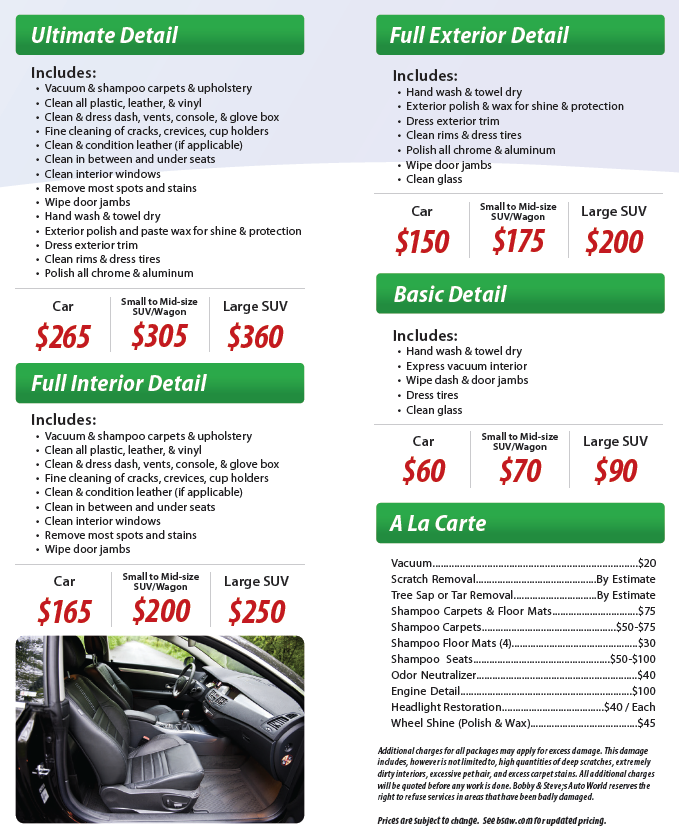This Essential Guide to Auto Detailing for Newbies

Owning a vehicle is not just about transportation; it's also about pride and preservation. After all, your vehicle is a reflection of your way of living and can significantly impact your everyday life. That’s where car detailing comes in—a thorough process that goes beyond a simple wash to refresh your vehicle and keep it looking brand new. If you are a new car owner or have been on the road for a long time, understanding the ins and outs of auto detailing is essential to maintaining your investment and enhancing your driving pleasure.
In this ultimate guide to car detailing for beginners, we will cover everything you need to know about keeping your car in excellent condition. From the importance of routine detailing and expert recommendations on frequency to the key differences between interior and exterior detailing, we’ll cover it all. You'll discover how to clean your car without scratching the paint, the benefits of ceramic coatings versus traditional wax, and even how to address those stubborn water spots. Whether you're searching for effective cleaning techniques or the top products to achieve a polished appearance, this guide will equip you with the knowledge to elevate your auto detailing game. Get ready to turn your vehicle into a flawless masterpiece.
Comprehending Vehicle Detailing
Vehicle detailing is the careful washing and restoration of a car, inside and out, to reach an extraordinary level of purity and beauty. In contrast to a typical car wash, detailing extends past removing shallow dust and grime. It involves deep cleaning, polishing, and securing different areas, ensuring every aspect of the vehicle looks its best. This process is vital for keeping a car's look and can significantly enhance its resale value.

Regular auto detailing is not limited to for owners of high-end vehicles; it is a vital maintenance practice for anyone who wants to keep their car in top condition. Over time, natural causes such as dust, debris, sunlight, and salt from roads can damage a car's finish and interior materials. By opting for detailing services, car owners can prevent enduring issues and enjoy a healthier and aesthetically pleasing ride. It also provides an opportunity to tackle concrete concerns, like hard-to-remove blemishes or odors, which are frequently missed during routine cleaning.
Comprehending the distinctions between interior and body detailing is key for every car owner. Exterior detailing centers on the car's outer surfaces, including rinsing, polishing, protecting, and putting on finishing layers. In contrast, interior detailing highlights cleaning the cabin, targeting floor mats, seats, and all cabin areas. Both elements are important in the total maintenance of a vehicle, and consistently maintaining both cabin and outside needs can lead to a extended life and more enjoyable driving experience.
Fundamental Methods and Guidelines
To obtain a polished look in auto detailing, learning a handful of essential approaches can make a significant difference. Begin by using the dual bucket wash method to lessen scratches: a single bucket for soapy water and a second for rinsing your sponge or wash mitt. This prevents dirt from reapplying to your car's surface. Consistently work from the highest point down, as dirt tends to accumulate lower on the vehicle. Use a micro-fiber wash mitt, as it is less rough than regular sponges, providing a safer wash.
Drying off your auto properly is as important as washing. Soft fiber towels are best for removing moisture, as they soak up water and reduce the likelihood of swirl marks. Instead of cleaning in circles, attempt to use linear motions to stop scratches. For tight areas, consider a leaf blower or compressed air to blow away water from tight spots, which helps prevent water spots and guarantees a thorough clean.
When it comes to product choice, investing in high-quality detailing products can enhance your results. Look for neutral pH car shampoos that are designed to sanitize without removing any existing wax or sealants. For defense, decide between waxing and nanotechnology-based coating based on your needs and budget. Wax offers a traditional shine and is relatively easy to use, while ceramic coatings provide long-lasting protection and a more sturdy finish. Comprehending these techniques and guidelines will help you obtain impressive care results, ensuring your vehicle seeming brand new.
Sophisticated Automotive Detailing Techniques
To reach the best result on your car, understanding sophisticated car care techniques is essential. One of the most efficient procedures is the dual-bucket method, which assists prevent scratches and scratches during cleaning. By using one bucket for the soap solution and a second for rinsing the wash mitt, you can minimize the chances of contaminants being returned to the finish. Additionally, using a gentle wash mitt instead of absorbent pads can boost the wash effectiveness while being soft on your vehicle's look.
Another important strategy involves paint correction, which is the method of removing defects from the automobile's finish. This can be done using multiple grades of finishing compounds and pads, initially with a more strong approach and step-by-step moving to lighter products. This meticulous effort can revive the clarity and richness of your car's paint, making it look like new. Proper light conditions are important to review the paint closely and evaluate the level of correction needed for a seamless appearance.
Finally, keeping a protective layer through high-quality sealing techniques provides long-lasting results after service. Options like advanced polymer coatings and high-quality waxes not only provide a glossy finish but also shield the paint from environmental contaminants. Regularly using a maintenance sealant after a full detail can lengthen the life of your defense and improve your car's appearance. Understanding and implementing mobile detailing near me enhanced techniques can transform ordinary detailing into an expertise, elevating your automotive detailing to the next stage.
